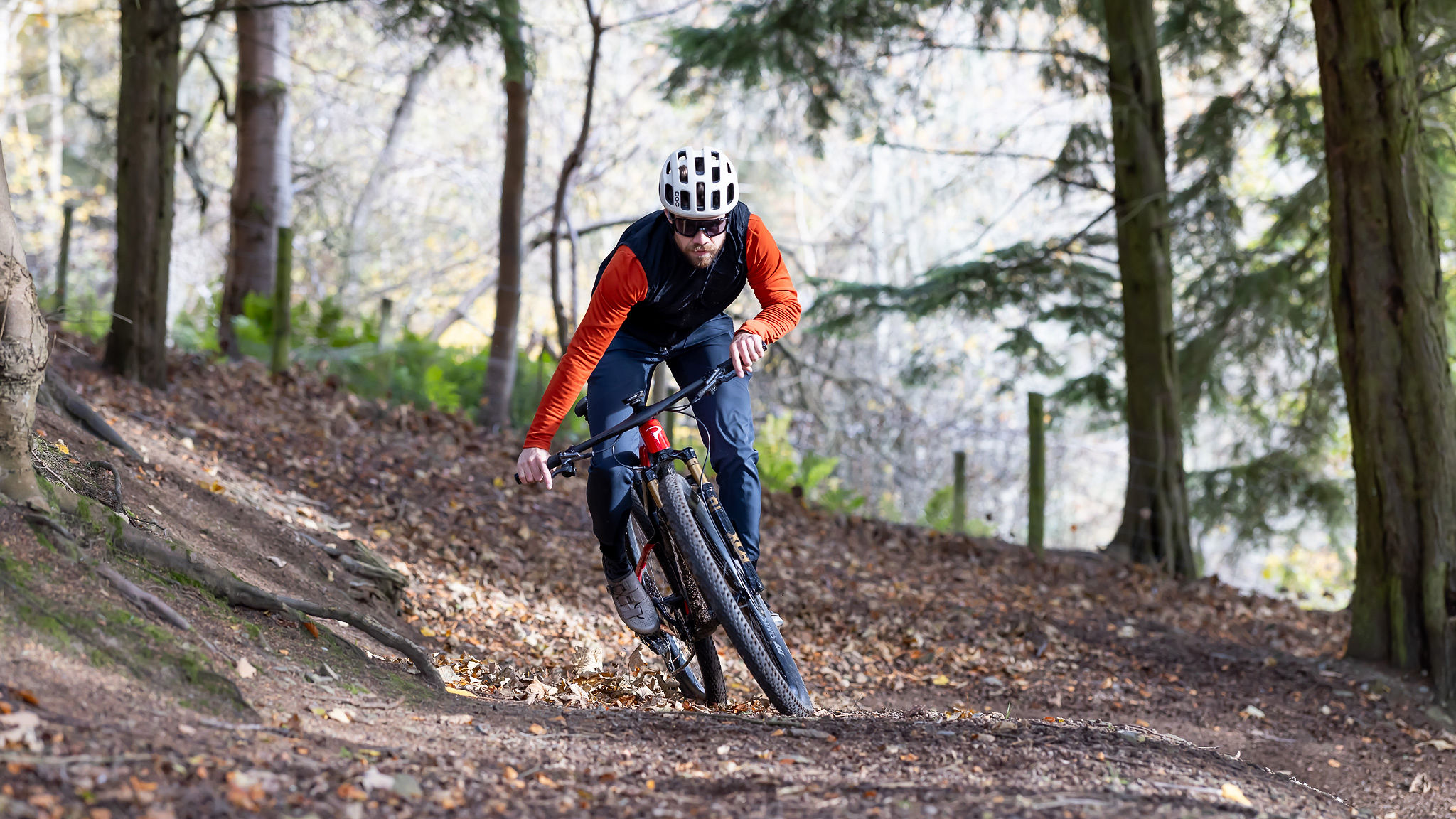Best dropper posts 2025 – our top-rated options for dropping your saddle
Whether you're riding XC or enduro, here's our test team's choice of the best dropper posts to get your saddle out of the way for maximum maneuverability
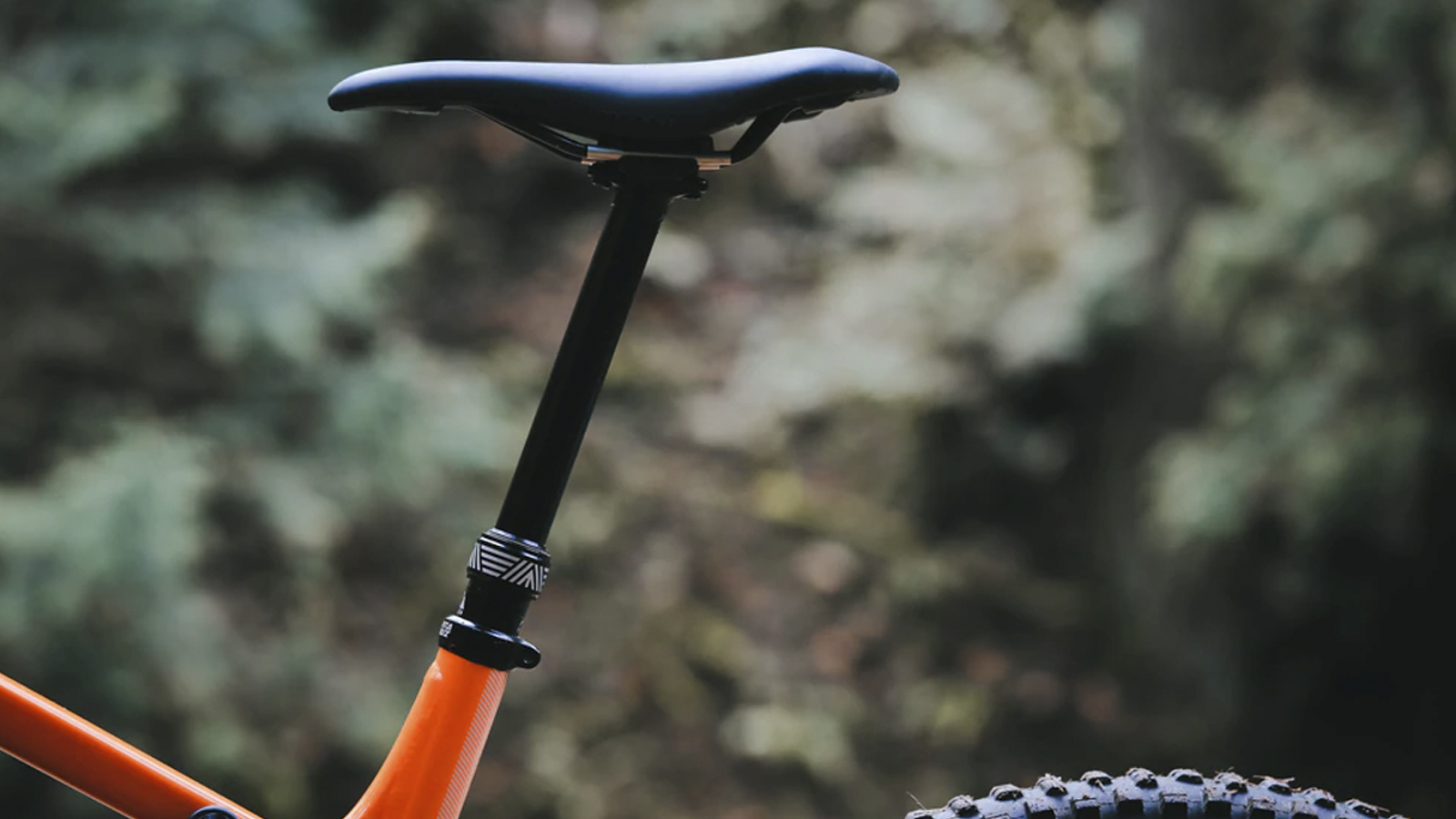
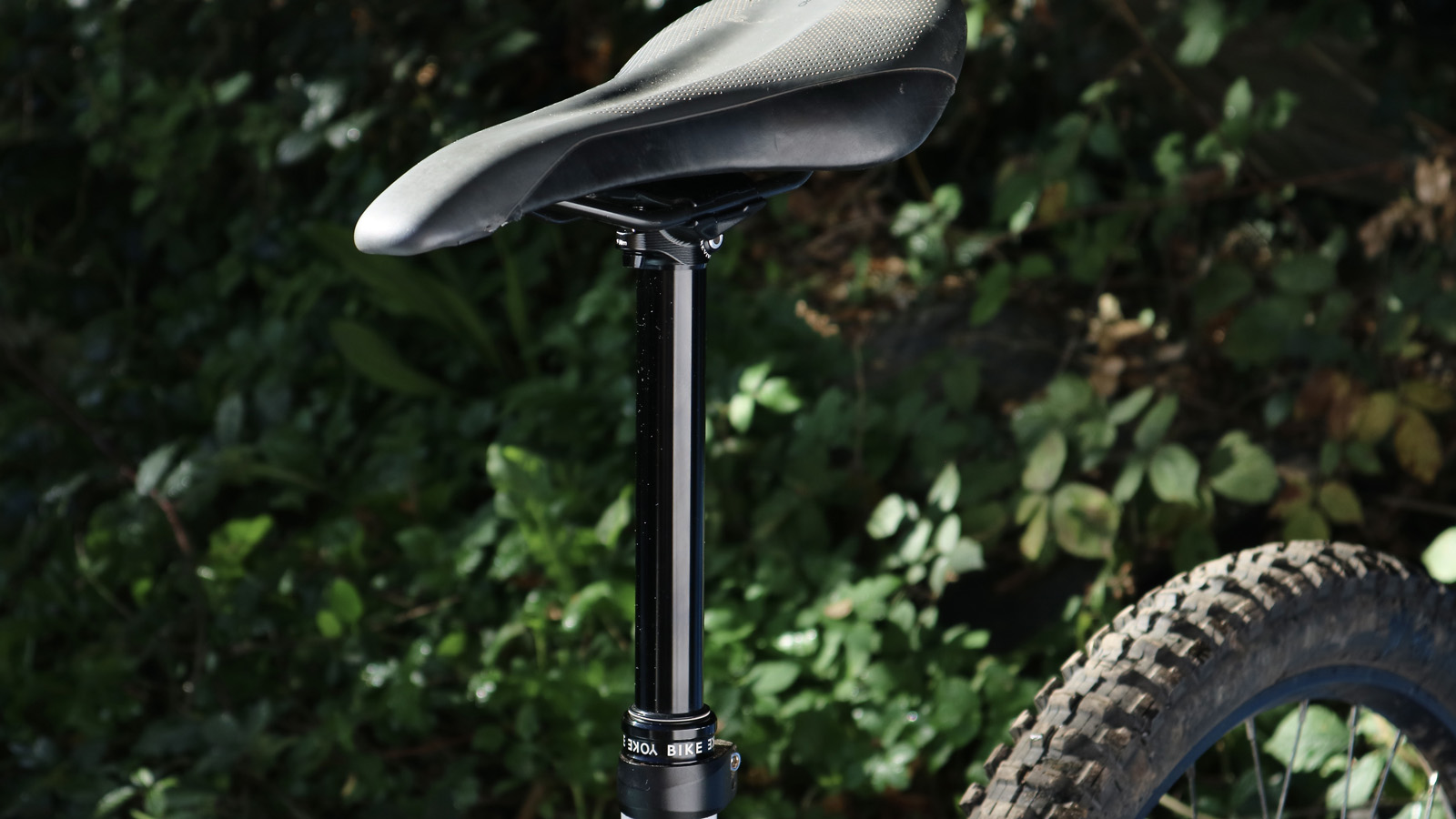
1. Best dropper overall
2. Best build quality
3. Best wireless option
4. Best for reliability
5. Best for-weight
6. Best value
7. Best hydraulic
8. Best budget wireless
9. Best for Kashima bling
10. Best 27.2mm
How to choose
How we test
It’s hard to believe that just a decade ago most riders were still riding without the best dropper posts, and even then they were mostly reserved for enduro bikes. In today's world, dropper seatposts are an essential on any mountain bike specification list as they let you instantly lower your MTB saddle for maximum confidence and control when tackling demanding terrain. Once you ride with a dropper you're never going back to a conventional seatpost.
Droppers have advanced considerably since their release and nowadays we’re seeing drops of 210mm, seamless wireless electronic actuation, adjustable travel, and bulletproof longevity, but which post is truly the best? Bike Perfect has been testing the best models and compiled a guide with all the necessary information.
In our testing, the best two we found were the PNW Rainer G3 (with the Loam lever) which was impossible to fault for fit and performance, while the Brand-X Ascend XL was best value – you can't get your seat dropped on the go for less!
If you’re an XC or gravel rider looking to reap the benefits of a dropper, check out our guide to the best short-travel dropper posts.
Best dropper posts
Why trust BikePerfect
1. Best dropper overall
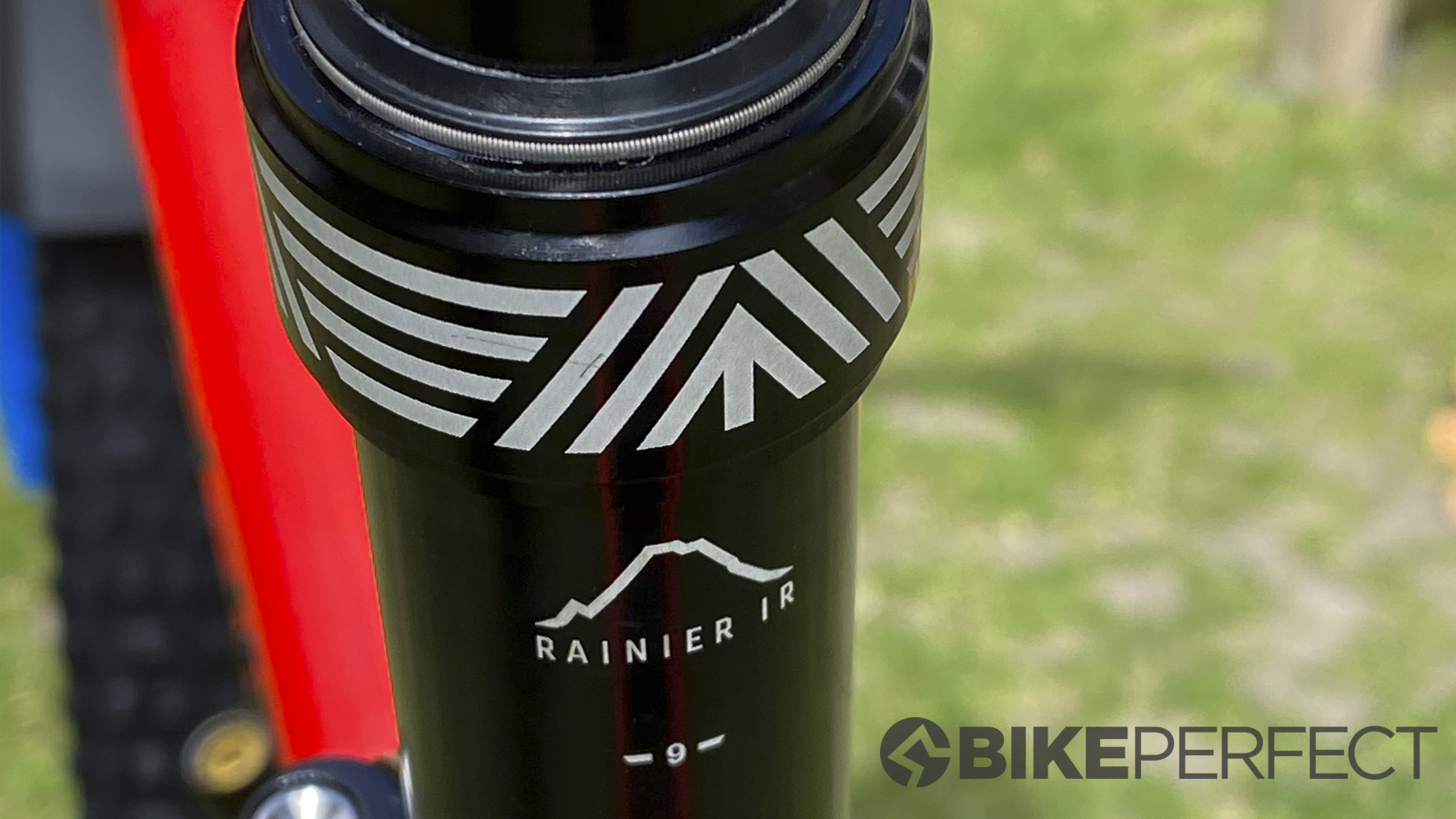
Specifications
Reasons to buy
Reasons to avoid
PNW sets out to answer all the glitches of one of the most vital yet potentially problematic components of modern mountain biking. It has not only nailed length, frame, and saddle fit but also easy installation issues with the Rainier.
The Rainer Gen 3 can be used for any off-road bike in your stable since it's available in a range of stroke options as well as diameters so everyone from mountain bikers to gravel riders will be happy. There's even a lifetime warranty.
While testing, we found that the Rainier Gen 3 is almost impossible to fault from price to weight and performance, stating PNW has "not only nailed length, frame, and saddle fit and easy installation issues with the Rainier G3 but added unique, blissfully simple stroke adjustment, luxury lever feel for immaculate control in whatever mount standard you need and color-coded it for extra grip."
Read more about why we gave this dropper post the perfect score after putting it through the paces in our full PNW Rainier Gen 3 review.
2. Best for build quality
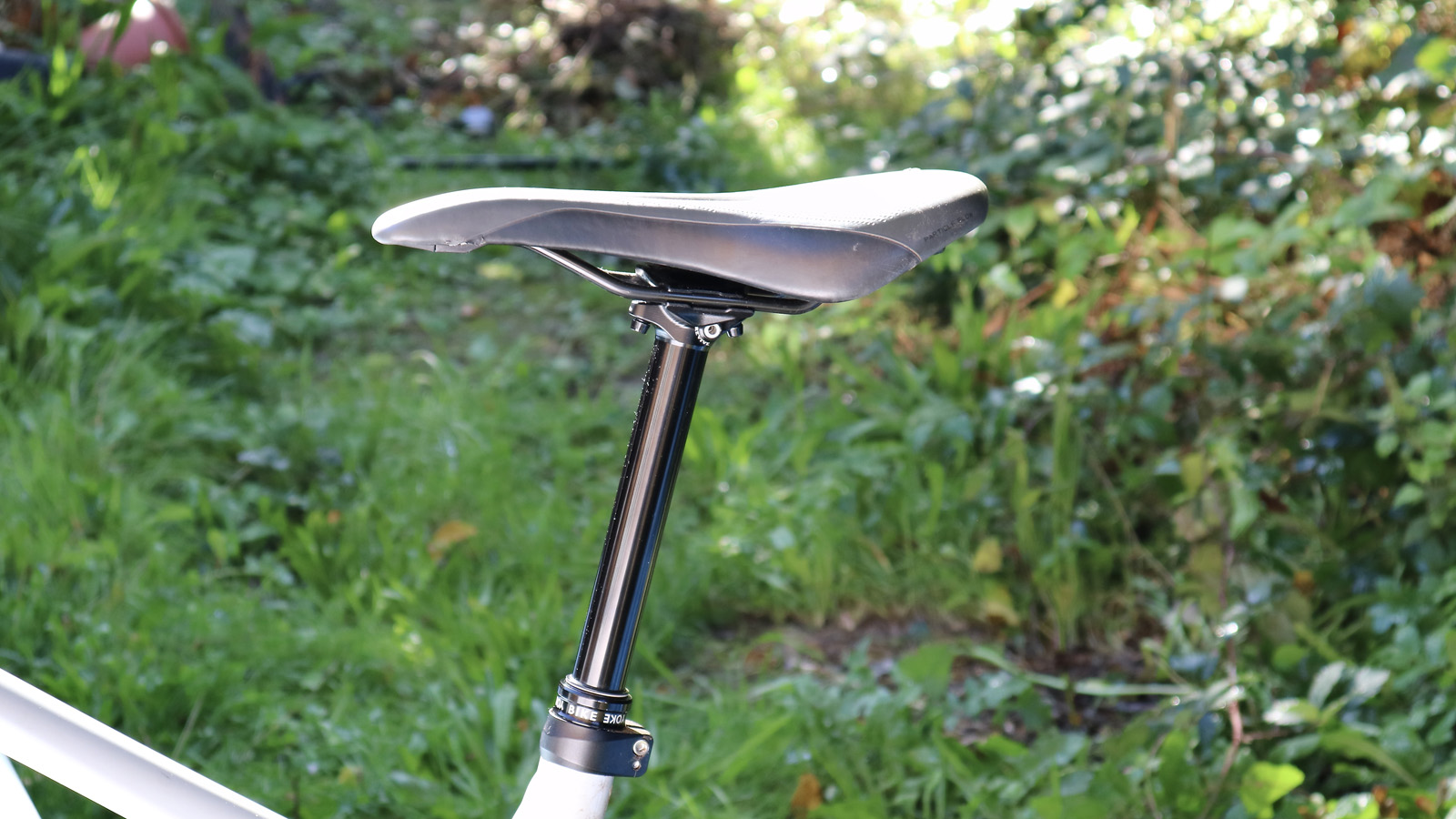
Specifications
Reasons to buy
Reasons to avoid
The BikeYoke Revive is a hydraulic post activated via a cable and a handlebar-mounted remote lever. Besides its smooth action and outstanding build quality, the Revive’s biggest asset is its super compact clamp and short overall design – with the collar measuring a mere 18mm, it’s one of the shortest we’ve used.
The Revive gets its name from the self-bleeding adjuster on the head of the post itself. Not only does this make general maintenance a total cinch it also means BikeYoke has been able to do away with an IFP which results in much smoother overall action. A downside to the IFP-free design is that oil and air can mix if you turn your bike upside down, but should this happen a simple flick of the Revive lever gets things running exactly as they should again – it’s only something we had to do twice during four months of rigorous testing – a small price to pay for a smooth action and blissful reliability.
While the BikeYoke Trig lever does have to be purchased additionally, thanks to its sealed cartridge bearing operation it's one of the smoothest out there. BikeYoke also offers several lever lengths to suit different riders' individual ergonomics better.
While we tested the 160mm travel post, the Revive is also available in 125mm, 185mm, and 213mm drops. It's on the pricier end but we think the performance, low-stack height, and trusty reliability ensure you’re getting your money's worth.
Tester, Paul Burwell, summed up his review by saying, "With its compact head and low collar, the BikeYoke Revive 2.0 allows you to get more post in the same space. Light and smooth lever action with built-in reset function and available in a ton of sizes."
For more info, head over to our full BikeYoke Revive 2.0 review.
3. Best wireless option
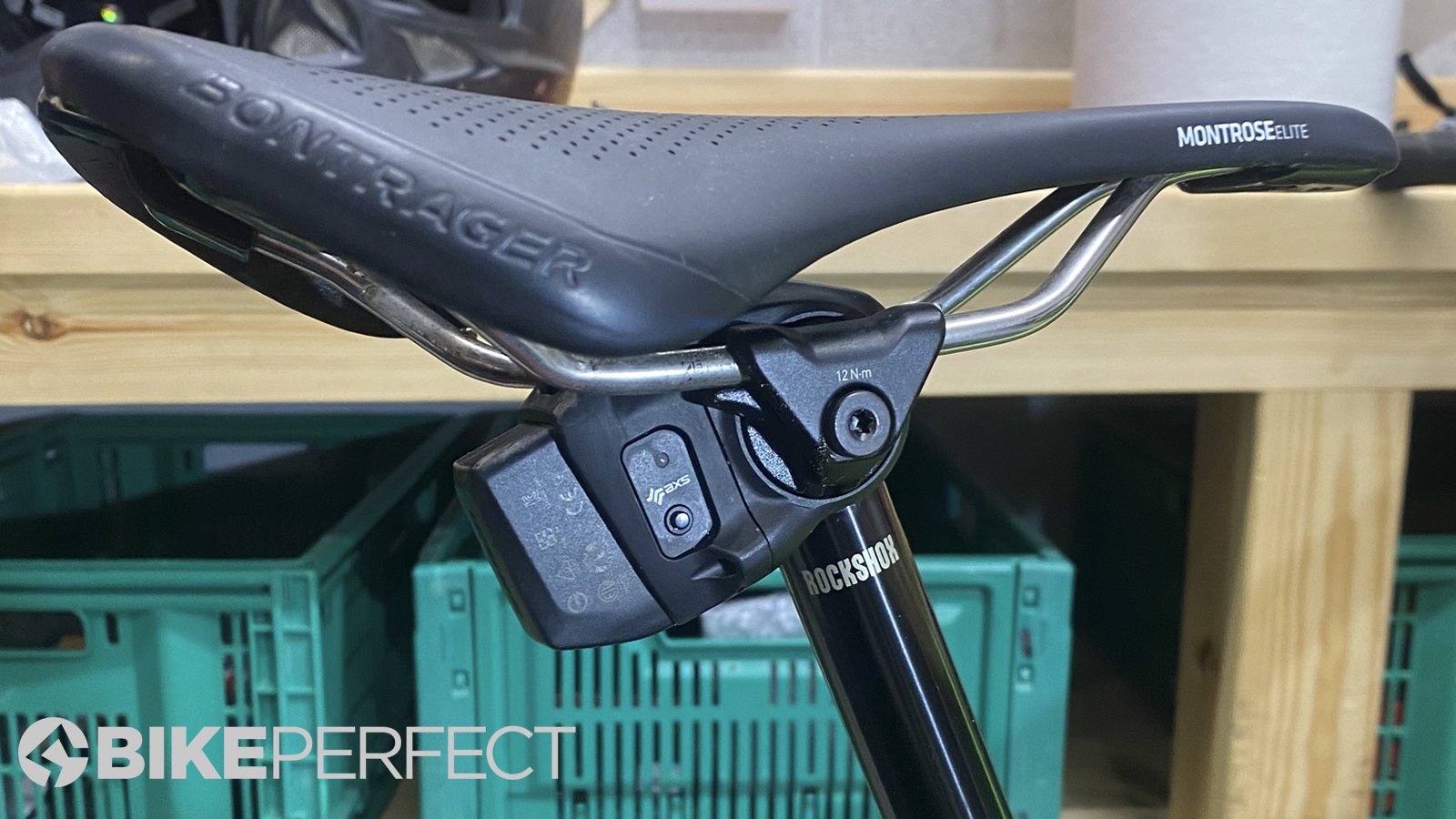
Specifications
Reasons to buy
Reasons to avoid
RockShox’s renowned Reverb post goes electronic as part of SRAM’s revolutionary AXS wireless groupset. You obviously pay a dear premium for this vanguard technology as an early adopter of electronic mountain bike components, but there are some real advantages to be had.
Wireless operation eliminates the need for cable routing and cutting. You don’t risk any cable tensioning issues over time either, which could influence this dropper’s actuation. Simply keep the battery charged and, as we found on testing, you'll have 40 hours’ worth of flawlessly reliable dropper-post operation guaranteed. The Reverb AXS comes with the RockShox AXS handlebar controller which can be also set up to operate other AXS components.
Our tester, Guy Kesteven, praised the convenience of the wireless system in his review, saying "the ease of installation and the way it cleans up your bars will be enough for some, but it also works better in some ways too. The latest Reverb is a lot smoother and easier moving anyway, but the AXS version is next level in terms of accurate trimming of ride height."
Read more about the post and its performance in our full RockShox Reverb AXS review.
4. Best for reliability
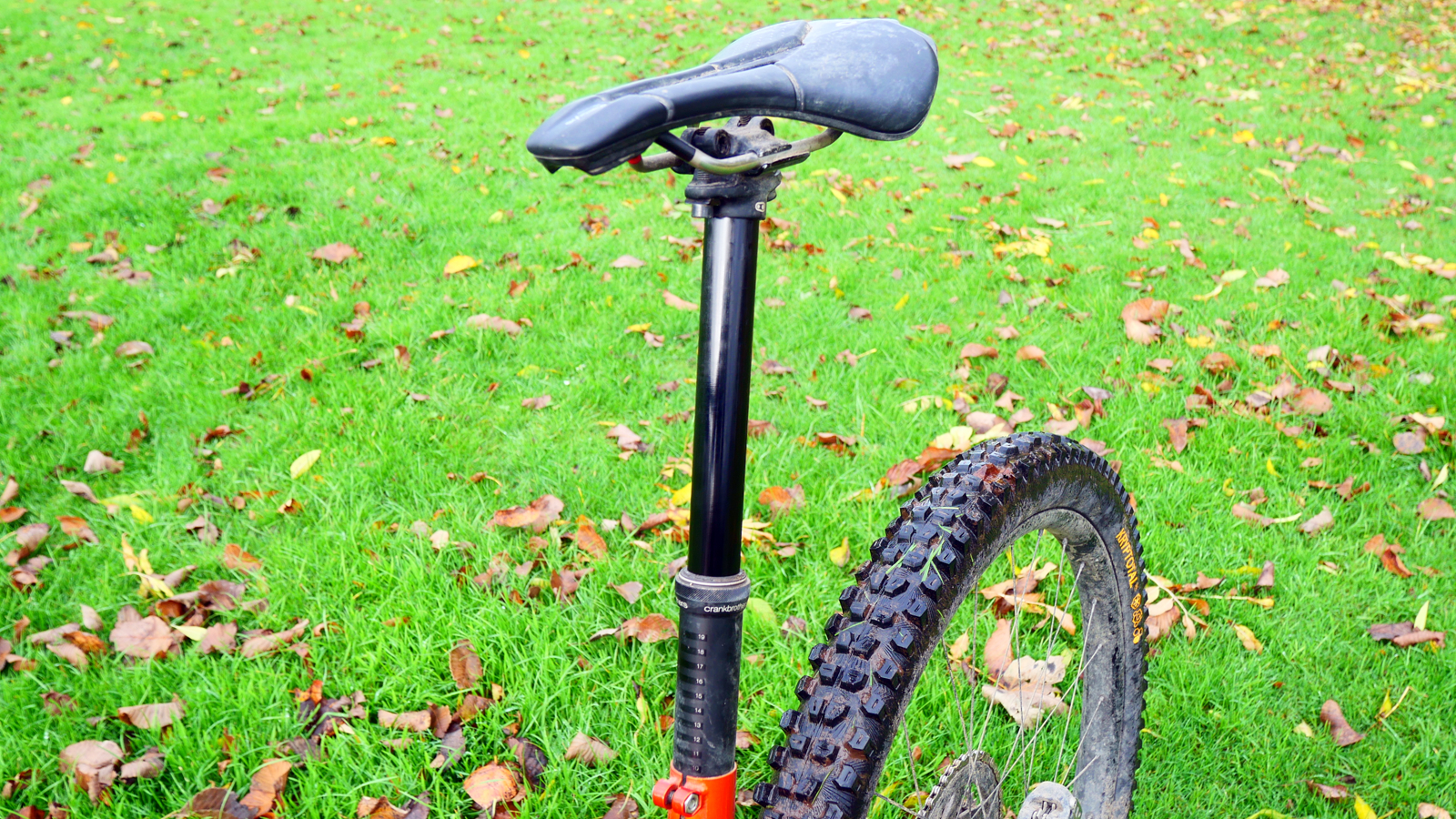
Specifications
Reasons to buy
Reasons to avoid
Crankbrothers' range of dropper posts have built a name for themselves by being super reliable. The Highline comes in three spec levels, as well as a slim diameter option for gravel bikes and older XC bikes. The Highline 7 sits in the middle of the range and uses a self-contained IFP hydraulic cartridge that slides on Igus LL-glide bearings. The insides are weatherproofed using Trelleborg seals to keep things running smoothly. The seat clamp is slotted so fitting a saddle is simple too. The dropper doesn't come with a lever, however, Crankbrothers' own Highline Premium Remote dropper lever is well worth considering.
Graham Cottingham has been running a Highline 7 dropper on his long-term test bike for the last three months of riding and in his review remarked that "performance-wise, the Highline 7 dropper post does everything required from a dropper post and, more importantly, has continued to perform after more than 600km of riding in all weather conditions. The post still smoothly slides up and down and only a very minimal amount of side-to-side wobble has developed. "
Read more about why in our full Crankbrothers Highline 7 review.
5. Best for weight
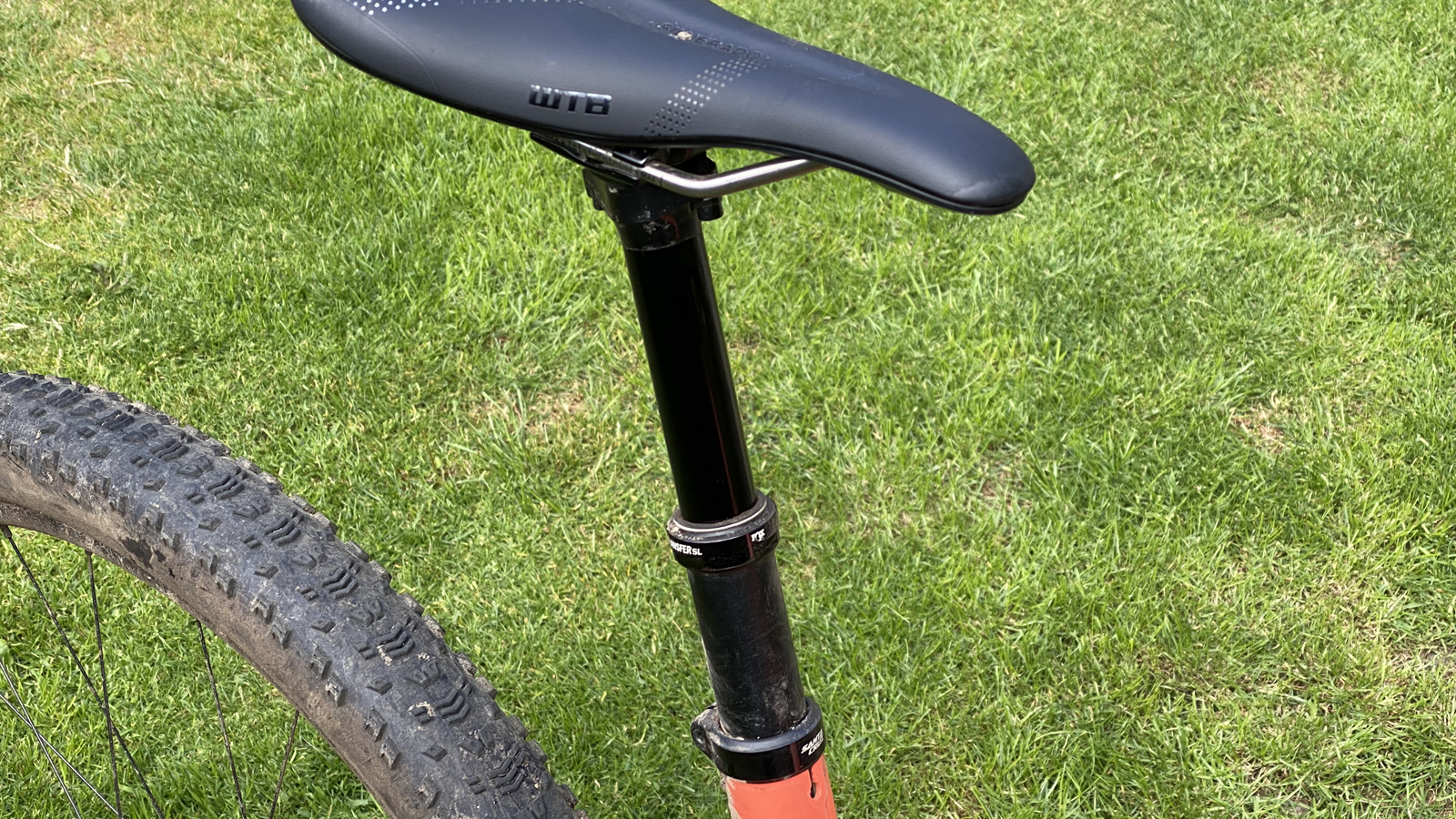
Specifications
Reasons to buy
Reasons to avoid
Thanks to its mechanically sprung, two-position system, the SL Performance Elite version of Fox’s Transfer post is 35 percent lighter than the range-topping model – also incorporating a new weight-reducing seat clamp and 27.2mm seat tube options.
Fox has dropped the hydraulically controlled air spring in favor of a coil spring, mechanically locked with a ball-bearing clutch making the simpler setup far lighter than before.
The actual drop distance is reduced to 50-100mm of stroke, depending on size, so it’s short for trail and super-short for the best enduro bikes, but enough for most XC rippers, gravel riders, or small riders who normally have no hope of fitting a dropper.
Although the post seems limited in length and mid-stroke positions, in his review Guy Kesteven remarks it's "a properly focused XC/gravel post with a real weight advantage and clearly communicated binary action. An intermediate position would have been the icing on the cake, but it’s got all the sizing and stroke options most of the target users will want."
Choose the standard Transfer if you want longer drops or more subtle action. Read more about the post and its performance in our full Fox Transfer SL Performance Elite review.
6. Best value
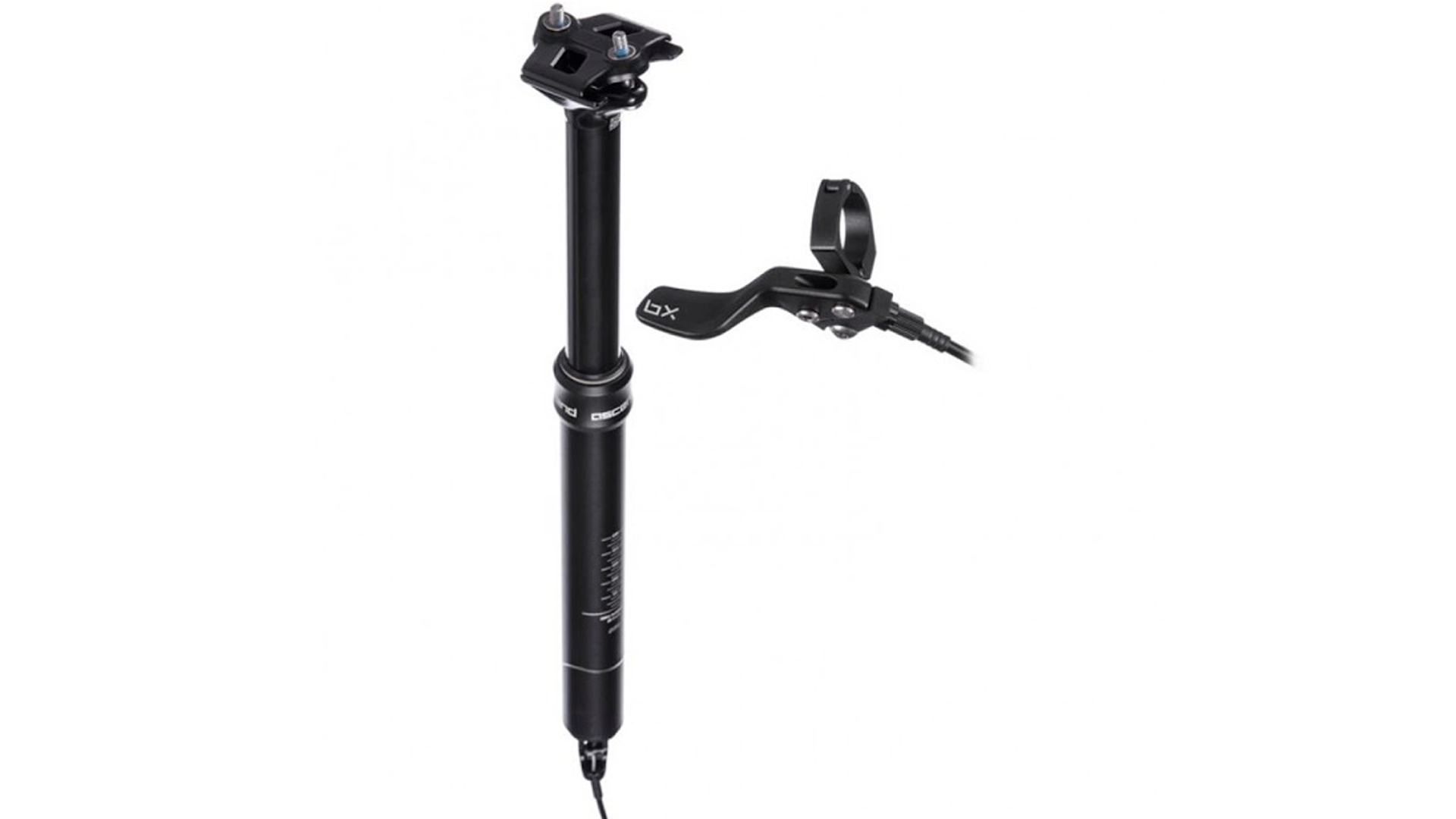
Brand-X Ascend XL
Specifications
Reasons to buy
Reasons to avoid
If you prioritize value over a slick appearance, Brand-X’s Ascend XL is unbeatable. With an ample 170mm or 200mm of stroke, we found this is a reliable dropper with specifications ideally suited to trail or enduro riders mindful of budget. There is also a non-XL model with 100mm, 125mm, and 150mm options.
Its price tag represents fantastic value, equating to what more sophisticated droppers often cost to service when abused. It's decently reliable too and we have a few on the go and haven't had any problems other than a bit of saddle wiggle. The Ascend XL’s weight is not outrageously heavy either although there are certainly lighter more expensive options. If you have some mechanical skill, there's also the option to DIY maintain this dropper, further reducing the cost of ownership over time.
7. Best hydraulic
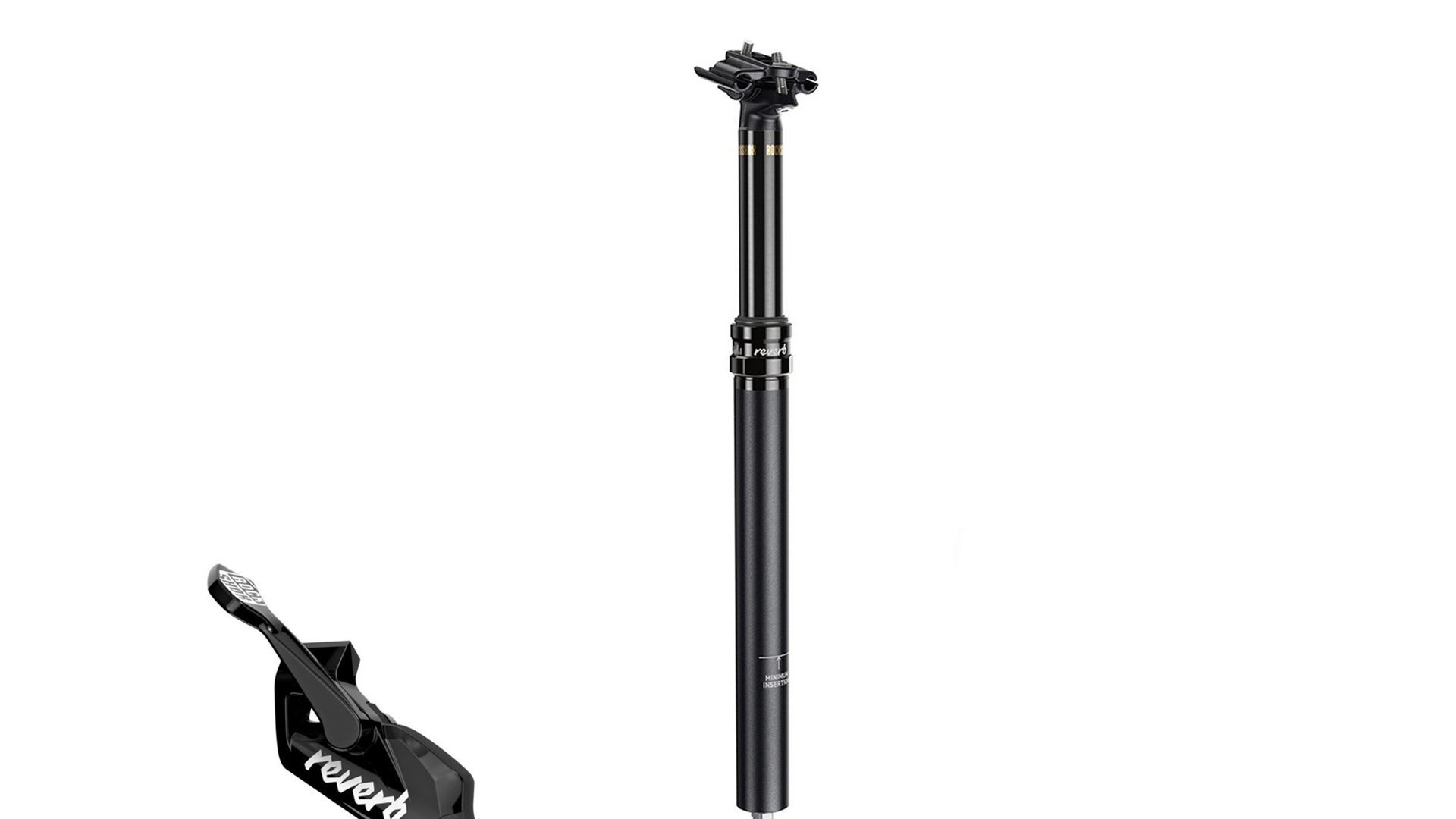
RockShox Reverb Stealth
Specifications
Reasons to buy
Reasons to avoid
RockShox's Reverb remains the dropper post you are still most likely to encounter. The current line-up offers a good spread of stroke lengths and seatpost diameters, along with a much-improved remote design.
The Reverb has developed an undeserved reputation for poor reliability, simply by the virtue that there are more of them out there than any other dropper – and that will return a proportionally higher volume of individual unit mechanical issues. If regularly serviced, they run very well.
We found that the Reverb was potentially problematic in very cold weather, due to the hydraulic-actuation system – but we are referring to temperatures that would probably also preclude you from considering any high-speed technical descends.
8. Best budget wireless
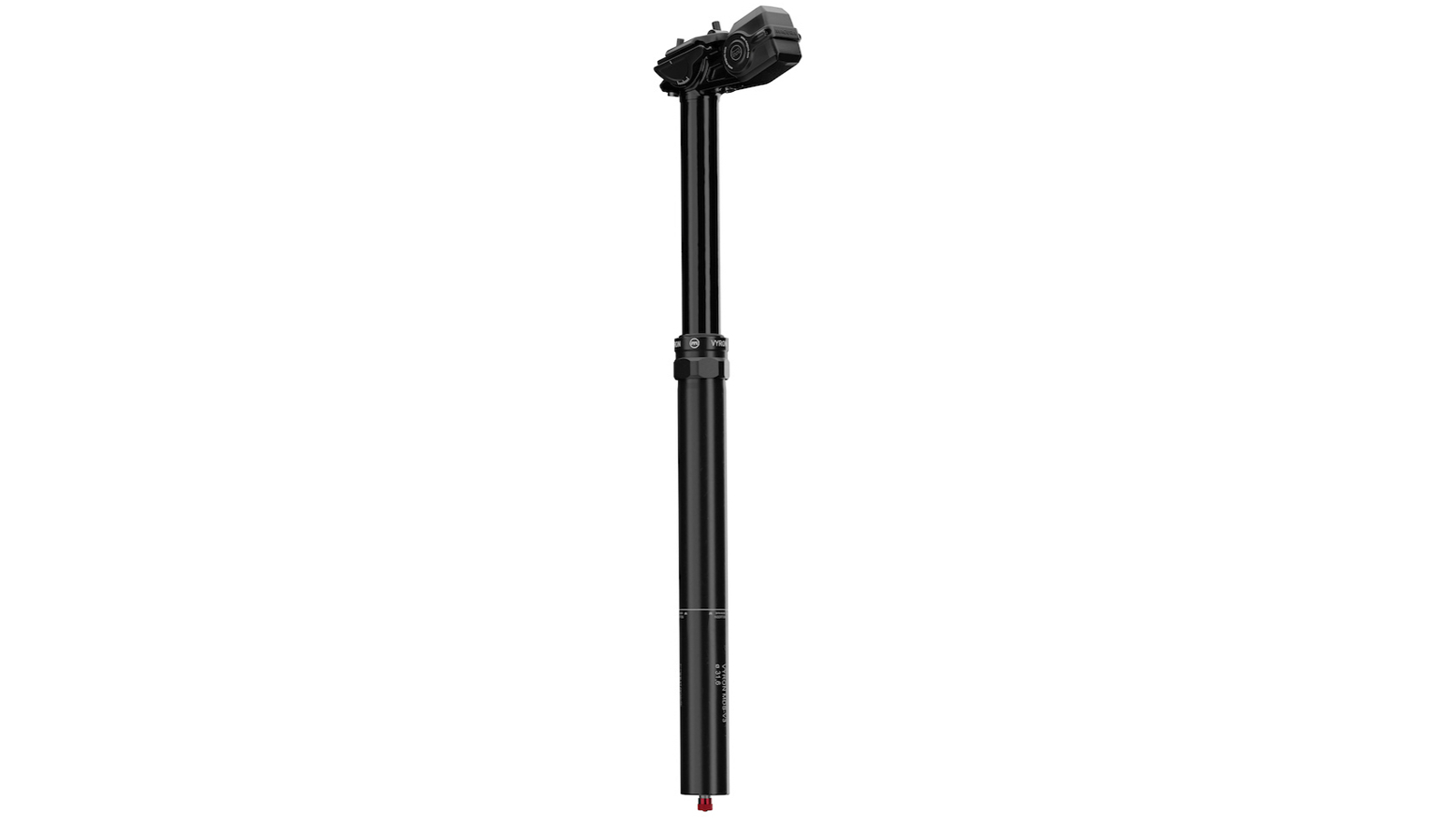
Magura Vyron MDS-V3
Specifications
Reasons to buy
Reasons to avoid
Magura was the first company to launch a wireless dropper post in 2016 and has since updated the Vyron dropper, giving it a quicker response time and return.
As with any wireless setup, installation is a simple affair, there are no cables to route or systems to bleed, just fit the post and remote. The remote communicates via Bluetooth to activate the motor in the dropper post to open the hydraulic system.
The dropper technique is unconventional as we found while riding that you must hold the post in the dropped position until the hydraulic circuit closes, which takes about 0.5 seconds.
The posts travel is easily adjustable, switching from either 175mm to 150mm or 125mm to 100mm by swapping out the immersion tube bottom.
The latest version of the post opts for replaceable batteries in the remote and post – the remote takes a CR2032 battery and the post uses CR2. The switch to batteries allows for better weather sealing and the Vyron MDS-V3 has an IP-67 rating. On a full charge, Magura states that you should expect a year's worth of use before the battery in the post runs out, although this depends on how much you ride.
9. Best for Kashima bling
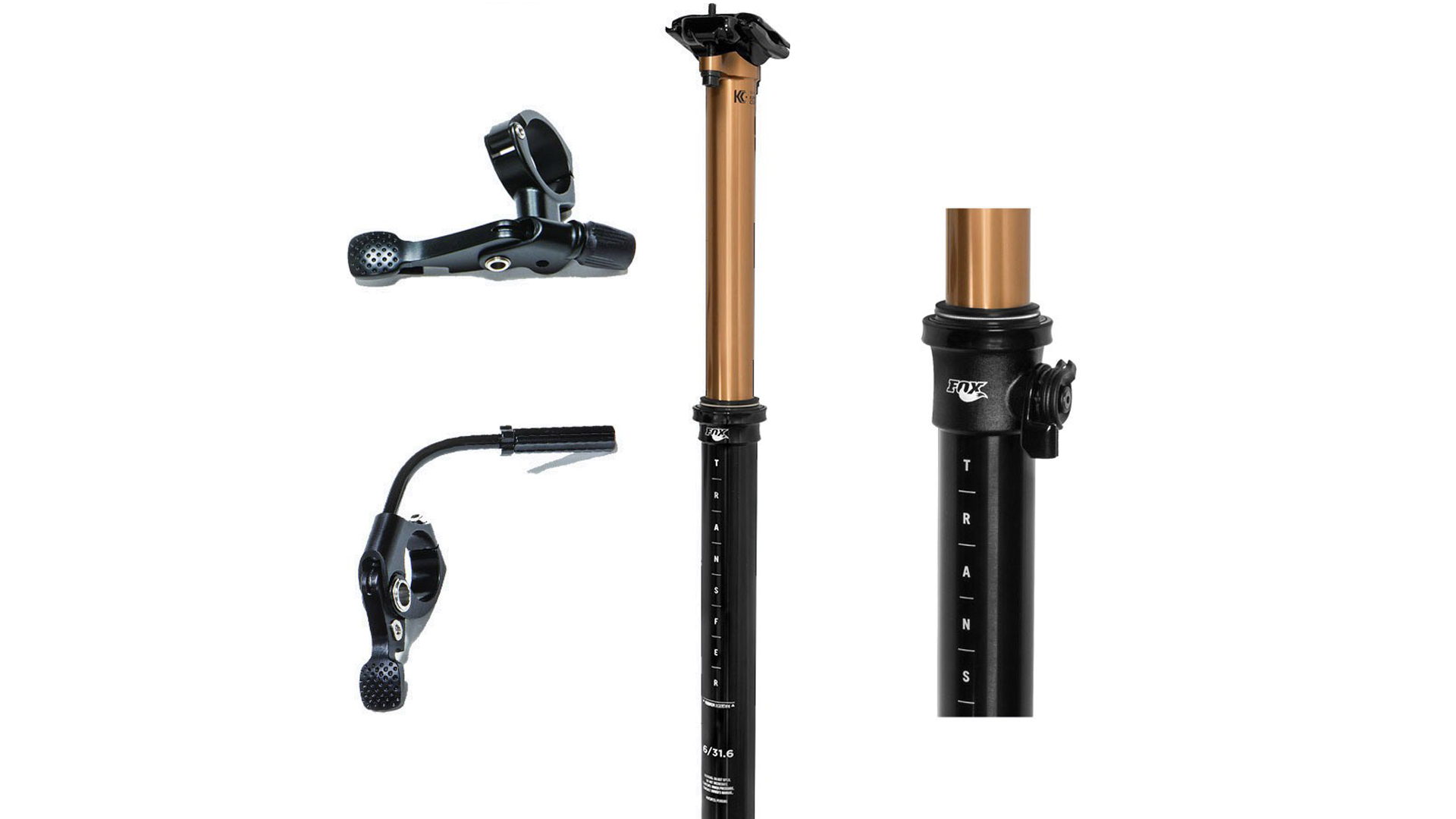
Fox Transfer Factory
Specifications
Reasons to buy
Reasons to avoid
If you like some Kashima-coated bling atop your trail or enduro bike frame, Fox’s Transfer Factory dropper is the solution. It features an ergonomically pleasing remote and smooth actuation, but no matter how good this dropper looks, it remains very expensive – and the cost of ownership can't be offset by DIY servicing as you’ll need to have it tended to by an official Fox service center.
We found that available stroke lengths are satisfactory but there are only two-seat diameter options – an area where its direct rival from RockShox, the Reverb, is superior offering a 34.9mm option. If you have the money and simply must match your Fox X2 shock or Factory 36 fork with a gleaming Kashima-coated dropper, this is the only choice.
For riders looking for a lighter Fox dropper with less travel, we'd recommend that the Fox Transfer SL is the dropper for you.
10. Best 27.2mm
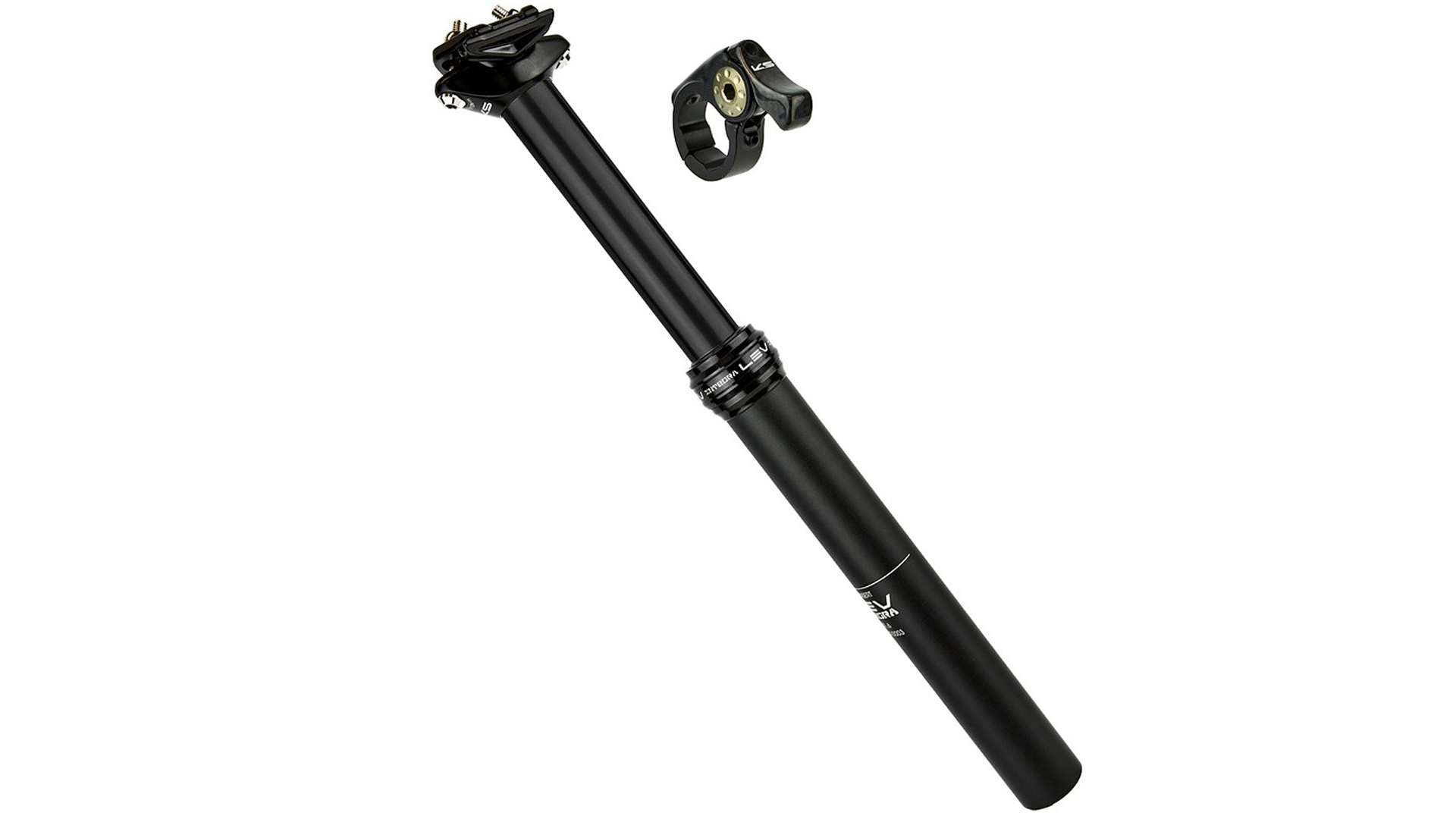
KS LEV
Specifications
Reasons to buy
Reasons to avoid
The KS Lev has a great remote design and we found while riding that actuation was very smooth thanks to its roller-clutch bearing design. These posts are reasonably light, too. But the feature that makes the KS Lev range most notable is a narrow seatpost option.
If you're running a steel hardtail or ultralight carbon bike with a 27.2mm seatpost, your options for a dropper are severely limited. KS has endured by offering the Lev in a 27.2mm seatpost diameter, catering to a dedicated group of riders who value the feel of a steel hardtail frame and enjoy technical descending.
Not only does KS offer a narrower diameter post, but they also provide a huge range of travel options from as little as 65mm, all the way up to 175mm.
How to choose the best dropper posts
What is a dropper post?
Dropper posts have become an essential component of almost all modern mountain bikes. They allow a rider to move their seat from a high climbing position to a low descending position using a lever on the handlebars.
There are different types of dropper posts, most use a cable to actuate the dropper although you also get hydraulic, electronic, and even air dropper posts as well. They all essentially do the same thing though, press the lever or button on the handlebars and the saddle raises. When you want the saddle to go down again, press the same lever or button and sit on the seat to push it back down.
Being able to quickly and easily move your saddle down makes descending considerably easier as you can move your weight around the bike better without a saddle in the way.
What do I need to measure to get the right dropper for my bike?
When measuring up your bike for a dropper post there are a few key things that need to be taken into consideration. First off is to determine which diameter of seatpost your frame requires – most modern frames are likely to be either 30.9mm or 31.6mm, while older frames, especially those manufactured from steel could be 27.2mm. To ensure you're getting the correct one, check your old seatpost to see if the sizing is stamped on the shaft. Alternatively, measure the internal width of your seat tube with a set of vernier calipers.
When selecting the amount of travel (aka drop), you want to try to work out what the largest amount of drop both the frame and yourself would accept. A good starting point would be to measure your current saddle height, find out the insertion depth of your frame's seat tube and check out the stack stats published in our guide.
How much dropper post travel is best?
When RockShox launched the Reverb, 125mm was considered a lot of dropper post stroke. These days, that number is classified as a short-travel option. With the best dropper posts ranging from short 80mm and upwards of 200mm and beyond, some options can now get you into a lower and more stable position than ever before.
Essentially, you want to get the maximum drop possible so that your saddle is a low as it can be.
Can I put a dropper post on any bike?
It must be noted that there are constraints. Not all frames are designed to accommodate the latest generation of ultra-long droppers. Mountain bike designers have become cognisant of the grown-in dropper post length and the demand for them among riders, but older frames could limit your insertion depth and ultimately cap the ability of dropper post travel you can use.
Dropper post length and insertion depths is not the only consideration when choosing the best dropper post for your bike, seat tube diameter and potential cable routing must also be considered to assure fitting compatibility.
How do I maintain my dropper post?
Dropper posts carry a lot of rider weight and transfer a great deal of leveraged force onto their bushings when you are seated, pedaling along, and gently rocking those quads through your natural cadence. This is the primary reason that droppers develop dreaded fore-and-aft play and suffer return speed and actuation issues over time.
As droppers have increased in length, they have also become susceptible to bushing wear. Heavier riders, or those who ride with their seat at a peculiar angle, apply leveraged force to the post while pedaling in the seated position. The best droppers are those that possess the tightest possible manufacturing tolerances, which mitigate against the issues mentioned above, potentially causing premature component wear.
It is crucial to be reminded that the dropper post should be preserved with the same care and servicing discipline as your fork or shock. Keep them clean and don’t power-hose them after a muddy ride – it will only embed granular contaminants into the seals and bushings.
How we test dropper posts
All the dropper posts tested here have been used over at least several months in a range of conditions that are as harsh as we can make them. We expose the posts to riding in the cold, wet and muddy, as well as the hot, dry and dusty to check that their internals stand up to proper punishment and the posts operate as designed over time.
Meet the testers
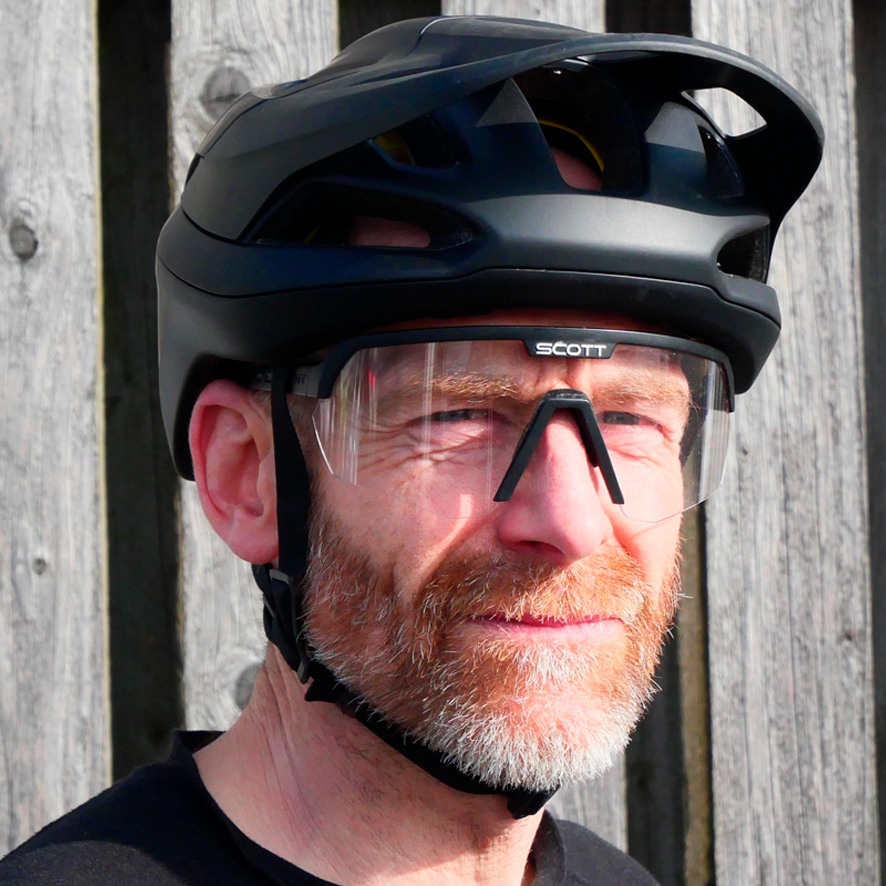
Guy's been testing and writing about mountain bikes ever since they first landed in the UK. Guy has been testing dropper posts since they first became a thing, so knows exactly what works and what doesn't.
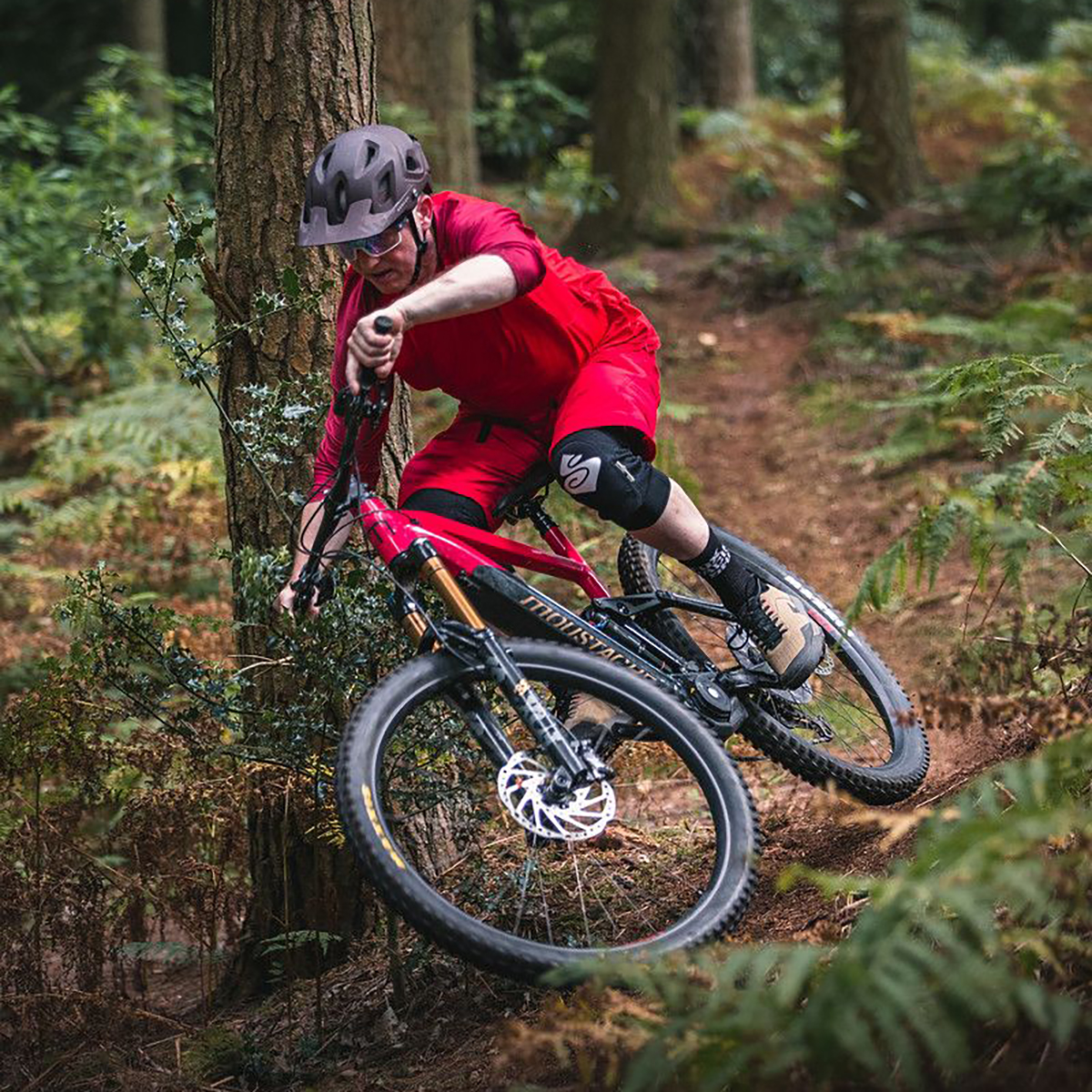
It feels like Paul has been testing bikes and products since the stone age, before suspension, disc brakes, dropper posts, and even the internet. He raced elite-level XC back in the 1990s but now spends most of his time roosting trails instead.

Graham is all about riding bikes off-road. With almost 20 years of riding experience, he has dabbled in downhill, enduro, and gravel racing. He once boldly declared if he could only have one, he would choose a dropper post over suspension.

Graham Cottingham joined the BikePerfect team as our senior tech writer in 2020. With over 20 years of riding experience, he has dabbled in downhill, enduro, and gravel racing. Not afraid of a challenge, Graham has embraced bikepacking over the last few years and likes nothing more than strapping some bags to his bike and covering big miles to explore Scotland's wildernesses. When he isn’t shredding the gnar in the Tweed Valley, sleeping in bushes, or tinkering with bikes, he is writing tech reviews for BikePerfect.
Rides: Cotic SolarisMax, Stooge MK4, 24 Bicycles Le Toy 3, Surly Steamroller
Height: 177cm
Weight: 71kg
- Guy KestevenTechnical-Editor-at-Large
- Rich OwenEditor, BikePerfect
- Jim BlandFreelance writer
